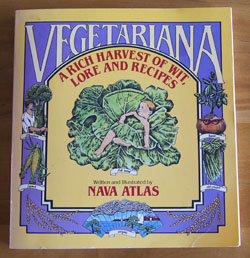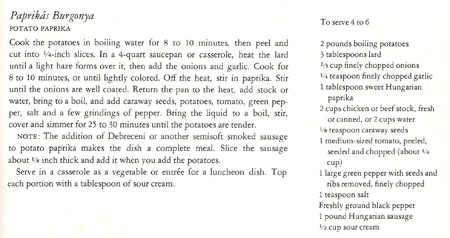Cookbook #215: PastaMatic MX700, Simac, distributed by Lello Appliances Corp., NJ, circa 1998.
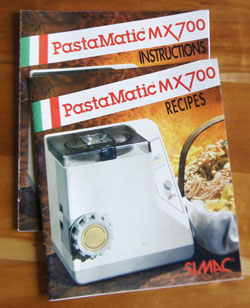 My Simac Pastamaker MX700 was a gift from my husband in 1998. I had been making my own pasta for years, using a Kitchenaid mixer to mix the dough, and a manual Marcato pasta maker to roll the dough and form the noodles (see my post, the Pasta Cookbook). The Simac Pastamaker takes home pasta making to a whole new level. The dough is mixed right in the machine, then extruded through die sets into many different shapes: linguine, macaroni, capellini, small fettuccine, spaghetti, lasagne, and bucato.
My Simac Pastamaker MX700 was a gift from my husband in 1998. I had been making my own pasta for years, using a Kitchenaid mixer to mix the dough, and a manual Marcato pasta maker to roll the dough and form the noodles (see my post, the Pasta Cookbook). The Simac Pastamaker takes home pasta making to a whole new level. The dough is mixed right in the machine, then extruded through die sets into many different shapes: linguine, macaroni, capellini, small fettuccine, spaghetti, lasagne, and bucato.
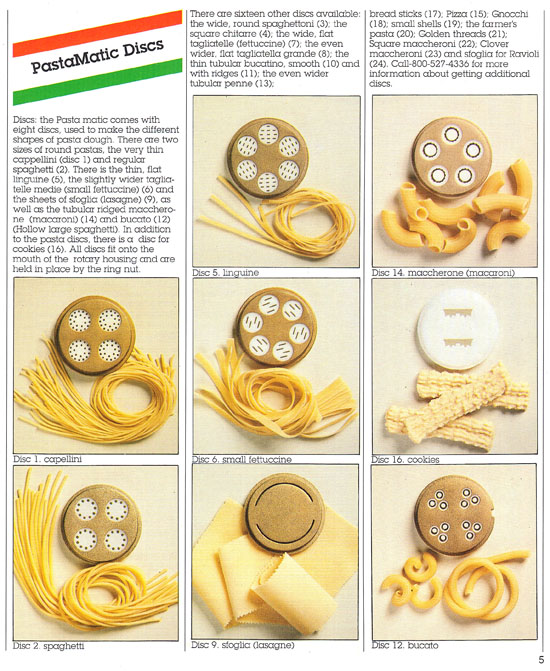 It’s a lot of fun! And time-consuming, yes. A decade or so ago I stored the Pastamaker down in the basement to make room for other things on my countertop. I don’t think I’ve used it since then. Now I have a great excuse to pull it back up, clean it, and make some great pasta. (I love retirement!)
It’s a lot of fun! And time-consuming, yes. A decade or so ago I stored the Pastamaker down in the basement to make room for other things on my countertop. I don’t think I’ve used it since then. Now I have a great excuse to pull it back up, clean it, and make some great pasta. (I love retirement!)
The receipt for my PastaMaker says it cost $235, new, in 1998. Are they still for sale? Yes, but I am not sure the Simac is available new. Amazon lists the PastaMatic, but none are available right now, so I can’t tell if they are new or not. A used one is for sale on eBay for $106. Google lists them from $12 to $520. Chef Masterpiece has one for sale for $519.98 – sounds like it’s new, but it doesn’t say.
My guess is that a machine offered by Lello, the company that distributed the PastaMatic MX700 that I have, is the replacement for the Simac. This is the “Lello 2730 3000 Pro Pastamaster Pasta Maker”. It sells for $235 new (same price as mine 19 years ago!). Fabulous Pasta reviews this model. There is some competition for the Lello from extruding pasta makers by Phillips, Gourmia, Ronco, and Viante.
During my web searches, I found two useful sites. On Pasta Recipes Made Easy, the author found a used Simac Pastamaker for $10 at a thrift shop (circa 2010). She gave the machine a favorable review, plus a link in case I ever lose my instruction booklet. On Toque Tips, I find instructions for using the Simac Pastamaker and a good article on making tomato sauce from fresh tomatoes.
My PastaMatic MX700 cookbook is actually three separate pamphlets. One is recipes, one is instructions, and one is an instruction card. I have a nice note to myself on the front of the instructions:
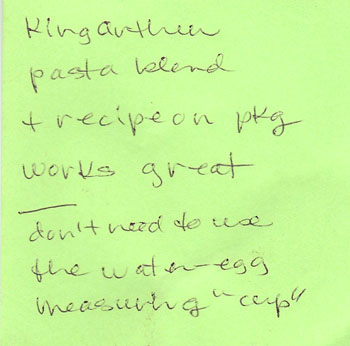 My note tells me that I used King Arthur Flour “pasta blend” the last time I made make the dough in the Simac. The reference to the water-egg measuring “cup” means that I used the package instructions for measuring the proper ratio of flour to egg-plus-water. The “cup” was shipped with Simac; it’s a specialized plastic measuring cup with levels marked for water and egg. BUT: these markings do not correlate with ounces, milliliters, or even cups. I never wrote down the exact capacity of that “measuring cup”. Each time I wanted to make pasta in the Simac, I had to locate this single-purpose utensil. I’m glad I wrote that note to myself! – now I know the proper ratio of wet to dry ingredients and can use a regular standard measuring cup.
My note tells me that I used King Arthur Flour “pasta blend” the last time I made make the dough in the Simac. The reference to the water-egg measuring “cup” means that I used the package instructions for measuring the proper ratio of flour to egg-plus-water. The “cup” was shipped with Simac; it’s a specialized plastic measuring cup with levels marked for water and egg. BUT: these markings do not correlate with ounces, milliliters, or even cups. I never wrote down the exact capacity of that “measuring cup”. Each time I wanted to make pasta in the Simac, I had to locate this single-purpose utensil. I’m glad I wrote that note to myself! – now I know the proper ratio of wet to dry ingredients and can use a regular standard measuring cup.
In my post Beard on Pasta , I used King Arthur Pasta Flour Blend to make my main-dish pasta (using my manual machine). Pasta Flour Blend is “a blend of golden semolina, durum flour, and King Arthur Unbleached All-Purpose Flour”.
Semolina is a durum wheat, but it is coarsely ground and not the best for pasta because it does not make a pasty dough. That’s why it is blended with other flours in recipes and in the Pastry Flour Blend. Myown old-time basic pasta dough recipe is 3/4 unbleached flour and 1/4 semolina.
The recipes portion of PastaMatic MX700 includes:
- egg pasta (eggs, water, bleached all-purpose flour)
- water pasta (water, bleached all-purpose flour)
- semolina pasta (eggs, water, 2 cups semolina flour, 1 1/4 cup bleached all-purpose flour)
- spinach pasta (cooked spinach, eggs, bleached all-purpose flour)
- watercress pasta (watercress instead of spinach)
- tomato pasta (tomato paste, water, bleached all-purpose flour)
- whole wheat pasta (water, whole wheat flour, bleached all-purpose flour)
- egg white pasta (egg whites, bleached all-purpose flour)
- egg yolk pasta (egg yolks, all-purpose flour)
- buckwheat pasta (water, yeast, 1/4 pound buckwheat flour, 3/4 pound bleached all-purpose flour)
- soba (water, eggs, salt, 2/3 pound buckwheat flour, 1/3 pound bleached all-purpose flour)
I’ve run across “buckwheat flour” in several of my previous posts on health food or vegetarian cookbooks. But until I looked it up, I never knew that buckwheat is not wheat at all. Wheat is a grass, and buckwheat is not a grass, instead, it is related to sorrel and rhubarb. It is high in nutrients and grinds to a coarse flour.
The above recipes for pasta specify “bleached all-purpose flour”. I thought this odd, until I learned that bleaching flour causes it to dry out faster, giving a more consistent water content from bag to bag. Simac wants the consumer to have the easiest time with their recipes, and this takes precidence over the healthy aspects of unbleached flour. Me, I am used to dealing with variations in the water content of flours, and I will stick with my unbleached all-purpose flour.
Which type of flour should I choose to make pasta for this blog? I decide to try durum wheat, so I ordered some from King Arthur Flour. I open the package to find a beautiful slightly yellow fine flour. I will use only this type of flour in my pasta.
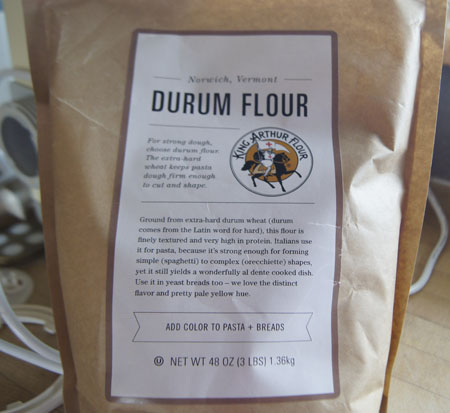 I carry the Pastamaker upstairs and find the dies (hidden in a pottery jar upstairs). Some of the dies are crusted with dried dough. Oh, I remember, it’s hard to get the dough out of the tiny slits and holes. Sometimes they clog during use, or the dough doesn’t feed properly through them. Hmmm. I better set aside an afternoon for my re-experiment with my Pastamaker.
I carry the Pastamaker upstairs and find the dies (hidden in a pottery jar upstairs). Some of the dies are crusted with dried dough. Oh, I remember, it’s hard to get the dough out of the tiny slits and holes. Sometimes they clog during use, or the dough doesn’t feed properly through them. Hmmm. I better set aside an afternoon for my re-experiment with my Pastamaker.
 I decide to make macaroni, because I can make spaghetti and flat noodles any old time in my Marcato.
I decide to make macaroni, because I can make spaghetti and flat noodles any old time in my Marcato.
Note: Pasta made in the Simac Pastamaker is meant to be cooked right after it is formed, it directs me to do this right in the recipe booklet. When I make flat noodles or spaghetti using the manual Atlas pasta maker, I usually cook it, too, right away, but many (most?) people dry pasta before cooking.
I followed the recipe on the Pasta Magic KA Flour bag, substituting durum flour for the pasta magic mixture. This recipe has 4 eggs per 3 cups of flour; my old stand-by recipe has 2 eggs per 2 cups of flour.
Durum Pasta
- 3 cups durum flour (16.4 ounces)
- 4 eggs (I used jumbo yolk eggs and a couple had double yolks, this might have been too much egg)
- 2-4 tablespoons flour
- electric, extruding past machine
- have ready a pot of boiling water
I debated whether or not to add salt or olive oil to the dough mixture. This time, I left both out.
Follow the manufacturer’s instructions for your pasta machine.
Put the flour in the bowl of the pasta machine and start the motor. Add the eggs slowly, then mix for 3 minutes. Simac says to check the dough at this point. You want the consistency to be walnut-sized lumps, but not sticky. The dough is too dry if it feels floury and is in small granules. The dough is too wet if it feels sticky in large smooth balls. Correct if necessary by adding up to a teaspoon of water or 3 tablespoons of flour. Let knead another 3 minutes, for a total of 6 minutes. (In another part of the Simac instructions, it says to knead for 8-10 minutes for any recipe.)
Switch your pasta machine to extrude. (At this point, I attach the wetted macaroni die.) As the pasta comes out of the die, use a sharp knife to cut it into your desired lengths.
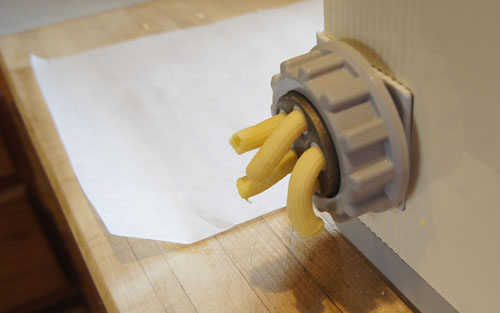 Boil for 30 seconds and check for al dente; boil another 30 seconds if necessary. In Colorado, though, I cooked my macaroni for 3-4 minutes and it was perfect.
Boil for 30 seconds and check for al dente; boil another 30 seconds if necessary. In Colorado, though, I cooked my macaroni for 3-4 minutes and it was perfect.
Okay, so now my report on how this actually worked for me today. First, my dough never formed walnut sized lumps. I carefully checked it, and it was neither grainy nor sticky, but it only formed large masses of dough. Thinking it too wet, I added more flour, to no avail. I added more water, to no avail. I was reluctant to keep the noisy machine running, plus it was hard to do so because a part on the lid of my pastmaker is broken, and I had to rubber-band it down to keep the dough lumps from opening the lid and turning the switch off.
This is nothing new, my memory tells me – this is what happens every time I have made pasta in the Simac. Now I remember why this machine is usually in the basement!
After 6-8 minutes, I decided to go ahead and extrude the dough. There is a small square hole in the bottom of the bowl that, when open, allows the dough to fall into the auger that feeds it up to and through the die. Well, I have to keep pushing the dough with the handle of a wooden spoon to get it into the hole, otherwise the mass of dough just passes over it, instead of dropping to the auger.
So I work, for probably half an hour, to get all the dough through the extruder. This means pressing down on the lid to make the motor run and extrude, then stopping it, taking off the lid and forcing a small chunk of dough into the hole, then restarting the machine. It was noisy, it took a long time.
But, my pasta was perfect. I absolutely love the durum wheat macaroni. It is firm, it is pale yellow, it is chewy, it is tasty. It is perfect.
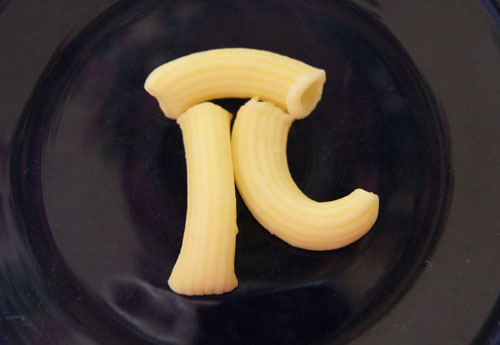
I was so involved in making this lovely durum macaroni that time just fell away. And by the time all the macaroni was extruded and cooked, I had a big mess on my hands – the pasta maker and counter top all covered with dough bits, the stove wet with pasta cooking liquid runover. And I still had to pull the macaroni into a dinner dish, “Macaroni and Cheese with Wine”. This is a great recipe from my cookbook Pasta: macaroni, very sharp cheddar cheese, sweet white wine, butter, mustard, eggs, half-and-half, chopped green chiles, and bread crumbs (page 123). This dish needs to bake 40 minutes and then rest 10 minutes. I’ve gotta rush to get it done.
It wasn’t until the macaroni dish had finished cooking and I was serving our salads that I remembered I still had to heat up the big slice of ham that I had purchased for our main dish. And it wasn’t until after dinner that I remembered that I had not made a dessert!
Ah, but it was all worth it. My own homemade durum wheat in rich macaroni and cheese was a delight. Absolutely.

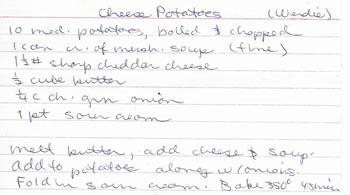

 My Simac Pastamaker MX700 was a gift from my husband in 1998. I had been making my own pasta for years, using a Kitchenaid mixer to mix the dough, and a manual Marcato pasta maker to roll the dough and form the noodles (see my post, the
My Simac Pastamaker MX700 was a gift from my husband in 1998. I had been making my own pasta for years, using a Kitchenaid mixer to mix the dough, and a manual Marcato pasta maker to roll the dough and form the noodles (see my post, the  It’s a lot of fun! And time-consuming, yes. A decade or so ago I stored the Pastamaker down in the basement to make room for other things on my countertop. I don’t think I’ve used it since then. Now I have a great excuse to pull it back up, clean it, and make some great pasta. (I love retirement!)
It’s a lot of fun! And time-consuming, yes. A decade or so ago I stored the Pastamaker down in the basement to make room for other things on my countertop. I don’t think I’ve used it since then. Now I have a great excuse to pull it back up, clean it, and make some great pasta. (I love retirement!) My note tells me that I used King Arthur Flour “pasta blend” the last time I made make the dough in the Simac. The reference to the water-egg measuring “cup” means that I used the package instructions for measuring the proper ratio of flour to egg-plus-water. The “cup” was shipped with Simac; it’s a specialized plastic measuring cup with levels marked for water and egg. BUT: these markings do not correlate with ounces, milliliters, or even cups. I never wrote down the exact capacity of that “measuring cup”. Each time I wanted to make pasta in the Simac, I had to locate this single-purpose utensil. I’m glad I wrote that note to myself! – now I know the proper ratio of wet to dry ingredients and can use a regular standard measuring cup.
My note tells me that I used King Arthur Flour “pasta blend” the last time I made make the dough in the Simac. The reference to the water-egg measuring “cup” means that I used the package instructions for measuring the proper ratio of flour to egg-plus-water. The “cup” was shipped with Simac; it’s a specialized plastic measuring cup with levels marked for water and egg. BUT: these markings do not correlate with ounces, milliliters, or even cups. I never wrote down the exact capacity of that “measuring cup”. Each time I wanted to make pasta in the Simac, I had to locate this single-purpose utensil. I’m glad I wrote that note to myself! – now I know the proper ratio of wet to dry ingredients and can use a regular standard measuring cup. I carry the Pastamaker upstairs and find the dies (hidden in a pottery jar upstairs). Some of the dies are crusted with dried dough. Oh, I remember, it’s hard to get the dough out of the tiny slits and holes. Sometimes they clog during use, or the dough doesn’t feed properly through them. Hmmm. I better set aside an afternoon for my re-experiment with my Pastamaker.
I carry the Pastamaker upstairs and find the dies (hidden in a pottery jar upstairs). Some of the dies are crusted with dried dough. Oh, I remember, it’s hard to get the dough out of the tiny slits and holes. Sometimes they clog during use, or the dough doesn’t feed properly through them. Hmmm. I better set aside an afternoon for my re-experiment with my Pastamaker. I decide to make macaroni, because I can make spaghetti and flat noodles any old time in my Marcato.
I decide to make macaroni, because I can make spaghetti and flat noodles any old time in my Marcato. Boil for 30 seconds and check for al dente; boil another 30 seconds if necessary. In Colorado, though, I cooked my macaroni for 3-4 minutes and it was perfect.
Boil for 30 seconds and check for al dente; boil another 30 seconds if necessary. In Colorado, though, I cooked my macaroni for 3-4 minutes and it was perfect.
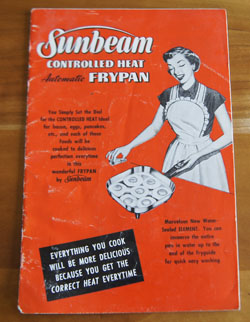 I discussed electric fry pans in
I discussed electric fry pans in 
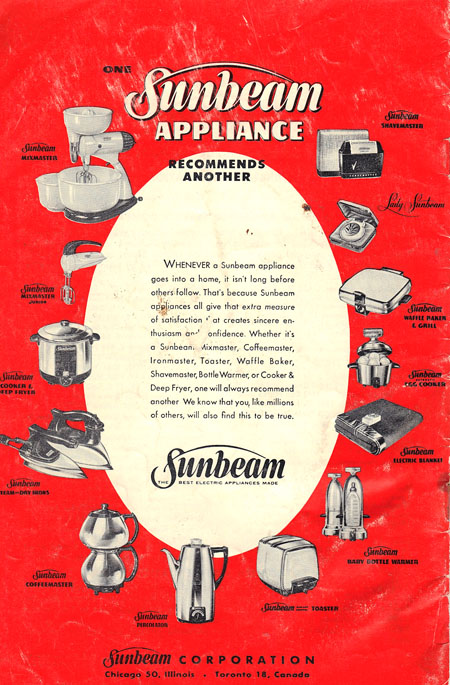 Look at all the Sunbeam appliances! Mixer (see my
Look at all the Sunbeam appliances! Mixer (see my 
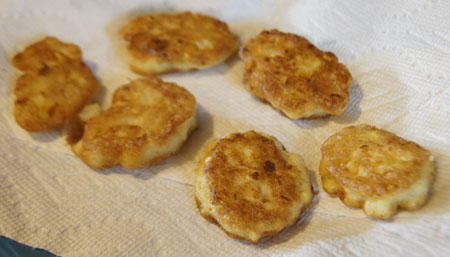 I liked these! But, my dining partner wasn’t impressed. The Southwestern Chicken was enough for him. I think these would have been good with syrup, as suggested in the recipe. I would like them fried in less oil than I used. This is a good recipe for very easy corn fritters; I just need to figure out how to include them in a dinner – or breakfast – plan.
I liked these! But, my dining partner wasn’t impressed. The Southwestern Chicken was enough for him. I think these would have been good with syrup, as suggested in the recipe. I would like them fried in less oil than I used. This is a good recipe for very easy corn fritters; I just need to figure out how to include them in a dinner – or breakfast – plan.


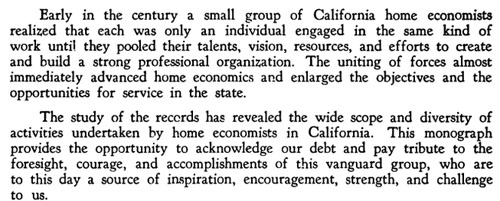

 The following is the beginning of an appendix in The California Home Economics Association, yesterday, today, and tomorrow, 1921-1961. It dilineates the early introduction of home economics to California schools. Note the last entry on “hand and machine sewing”. I learned sewing (as well as cooking) in junior high in California in the 1950s.
The following is the beginning of an appendix in The California Home Economics Association, yesterday, today, and tomorrow, 1921-1961. It dilineates the early introduction of home economics to California schools. Note the last entry on “hand and machine sewing”. I learned sewing (as well as cooking) in junior high in California in the 1950s.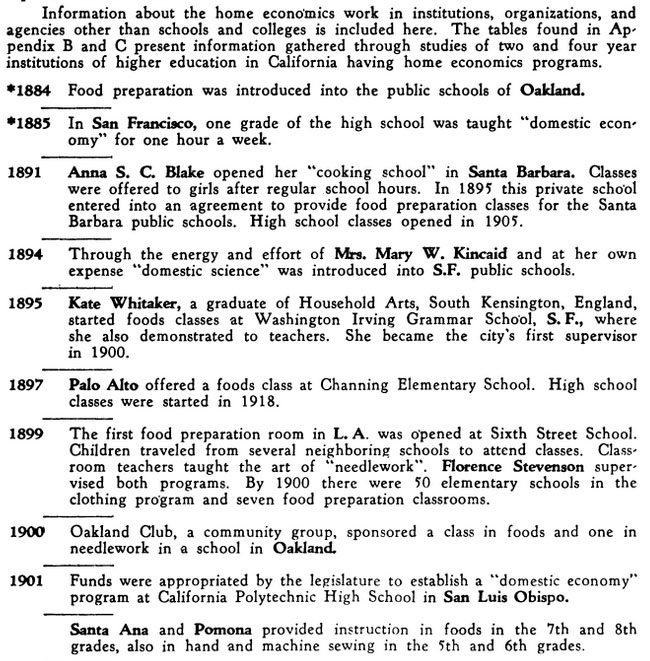 By the 1960s, American home kitchens are influenced by many changes: industrialization, urbanization, suburbanization, working mothers, a higher level of education, and automation.
By the 1960s, American home kitchens are influenced by many changes: industrialization, urbanization, suburbanization, working mothers, a higher level of education, and automation.
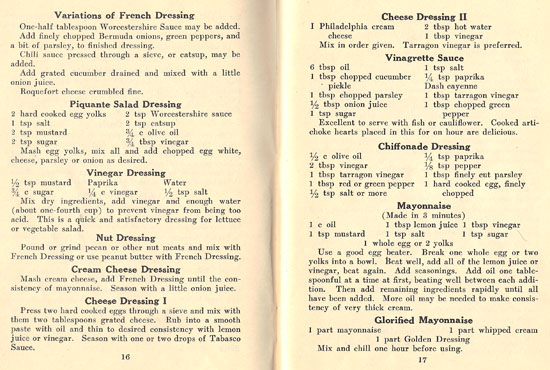
 Some salads have fancy presentations, like Butterfly Salad, or Banana Canoes.
Some salads have fancy presentations, like Butterfly Salad, or Banana Canoes.
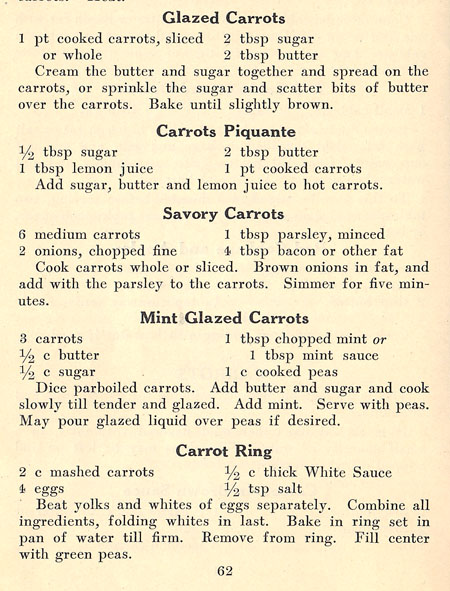 Glazed Carrots with Peas with Mint
Glazed Carrots with Peas with Mint I thought these were good – hubby was less impressed. I love the colors and the bright mint flavor. Yes, they were a bit sweet, but I thought it nice for a change.
I thought these were good – hubby was less impressed. I love the colors and the bright mint flavor. Yes, they were a bit sweet, but I thought it nice for a change.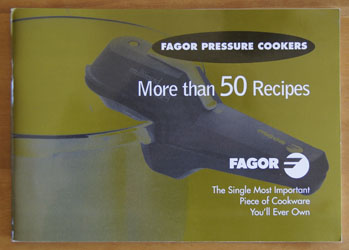
 The “suggested time” in the above recipe is indicated by a little chart below each recipe. I perused the instruction pages of the booklet and figured out that I should set my current pressure cooker to “high”.
The “suggested time” in the above recipe is indicated by a little chart below each recipe. I perused the instruction pages of the booklet and figured out that I should set my current pressure cooker to “high”.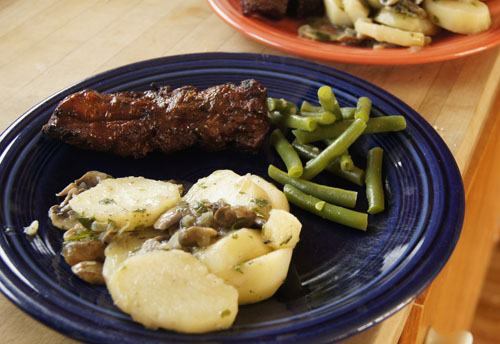 These were very good! And so fast and simple. I have to remember that it’s often worth the effort to carry the pressure cooker up from the basement. It really is time-saving, and clean-up is easy. I will make these again!
These were very good! And so fast and simple. I have to remember that it’s often worth the effort to carry the pressure cooker up from the basement. It really is time-saving, and clean-up is easy. I will make these again!

 I am surprised how much I like the recipes in this dated booklet! Many of them sound good, albeit the instructions are often quite brief: “Pour the marinade over the ribs and marinate for at least one hour. Grill ribs over charcoal for 45-60 minutes, or until done, turning frequently and brushing with sauce.” Each recipe includes the name of the contributor, usually a “Mrs.” from a western state.
I am surprised how much I like the recipes in this dated booklet! Many of them sound good, albeit the instructions are often quite brief: “Pour the marinade over the ribs and marinate for at least one hour. Grill ribs over charcoal for 45-60 minutes, or until done, turning frequently and brushing with sauce.” Each recipe includes the name of the contributor, usually a “Mrs.” from a western state.
 I haven’t cooked bone-in chicken pieces on a grill in ages. Below are the instructions given in this booklet for an old-style charcoal grill.
I haven’t cooked bone-in chicken pieces on a grill in ages. Below are the instructions given in this booklet for an old-style charcoal grill.
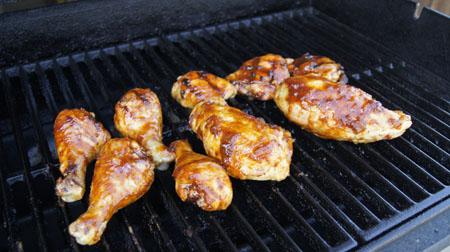 This chicken was really good! I will definitely grill chicken this way again. The sauce was perfect, and the chicken was juicy. It was just as good cold the next day!
This chicken was really good! I will definitely grill chicken this way again. The sauce was perfect, and the chicken was juicy. It was just as good cold the next day!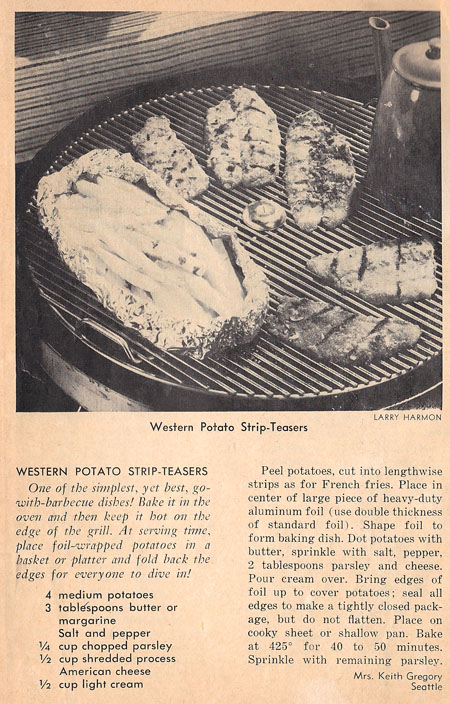
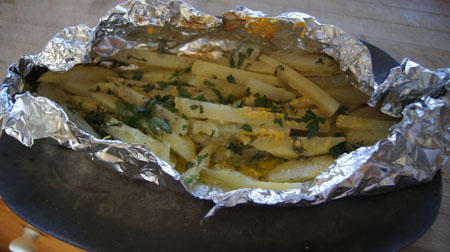
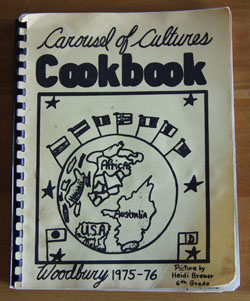
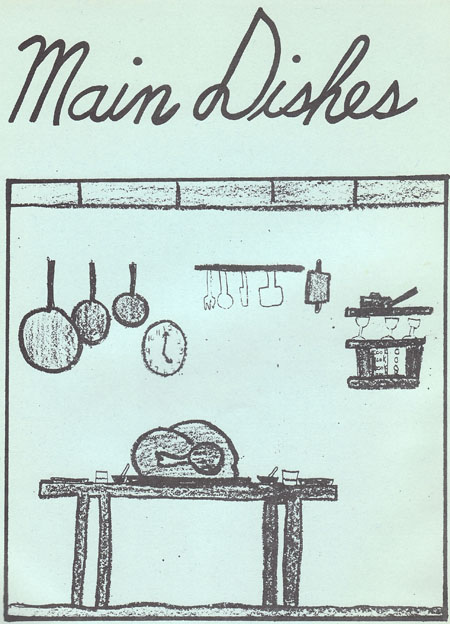


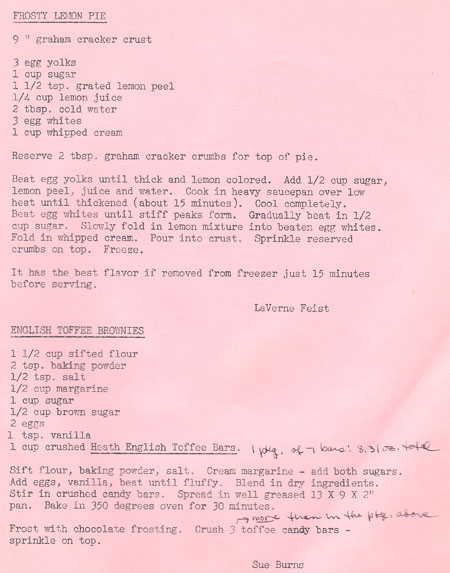
 We traveled to Turkey a couple years ago and thoroughly enjoyed the food (and the trip!). We often had rice like this rice pilav on that trip.
We traveled to Turkey a couple years ago and thoroughly enjoyed the food (and the trip!). We often had rice like this rice pilav on that trip.
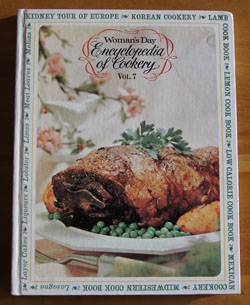 I have a set of twelve Encyclopedia of Cookery volumes and this is the seventh of that set – I covered the first six in previous posts. I’ve enjoyed all of them so far. I happily open this book to learn curious and helpful information about foods from kid(ney) to moc(ha).
I have a set of twelve Encyclopedia of Cookery volumes and this is the seventh of that set – I covered the first six in previous posts. I’ve enjoyed all of them so far. I happily open this book to learn curious and helpful information about foods from kid(ney) to moc(ha).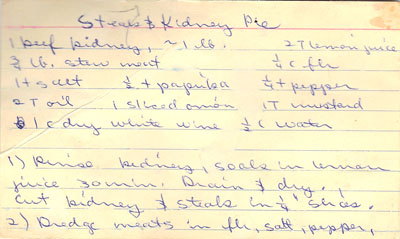
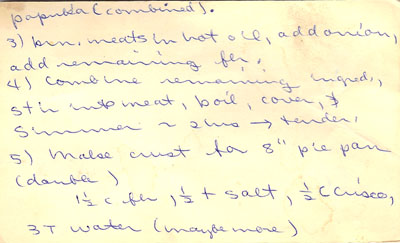
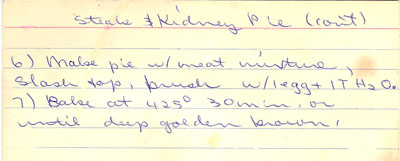
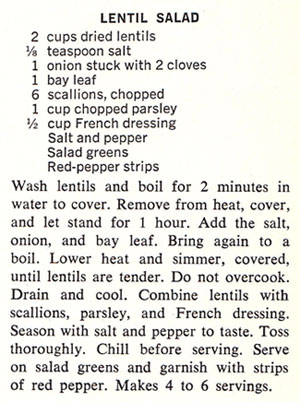 I’ve cooked lentils before, but not very often. I think this salad sounds tasty and fresh, and nutritious!
I’ve cooked lentils before, but not very often. I think this salad sounds tasty and fresh, and nutritious!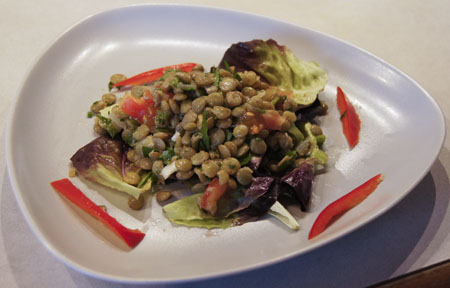 I liked the cooking method for the lentils because it didn’t get them too done. Note that I left the cloves out and used chopped onion (instead of a whole onion), changes from the original recipe. This basic lentil salad could be varied tons of ways with different seasonings, vegetable additions, and dressings.
I liked the cooking method for the lentils because it didn’t get them too done. Note that I left the cloves out and used chopped onion (instead of a whole onion), changes from the original recipe. This basic lentil salad could be varied tons of ways with different seasonings, vegetable additions, and dressings.